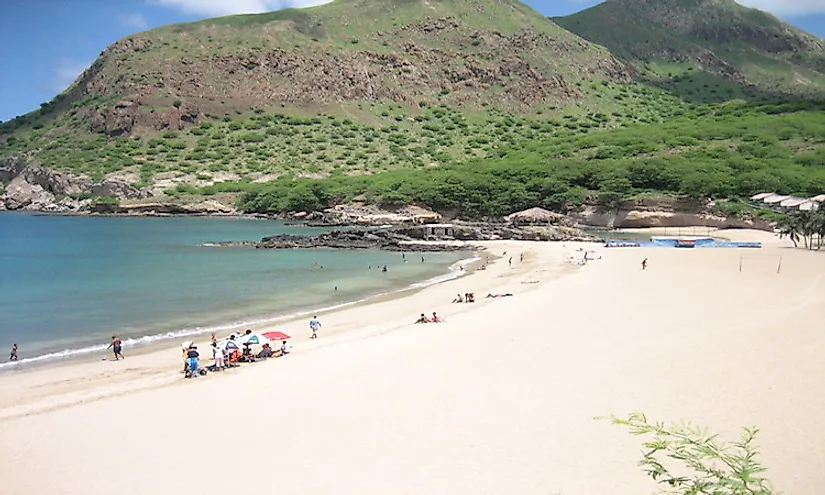Biggest Islands In Cape Verde

An archipelago in the Atlantic Ocean, Cape Verde has ten islands and three islets. The islands are located off the West African coast. The islands have diverse geography, from uninterrupted mountain ranges, plateaus, valleys, and stretches of beaches. These resources have contributed to a boom in tourism on the island, and the subsequent growth of their individual economies. Some of the big islands in the nation include:
Santiago
Santiago is the largest of the islands in Cape Verde, stretching for an area of 991 km2. The island is home to the capital of Cape Verde, Praia. More than half of all Cabo Verdeans reside on this island. The island has a diverse geography, including majestic mountains, beaches, and plateaus. The vegetation ranges from acacia, figs, and euphorbias to more barren regions. The island has three national parks to protect its exotic wildlife and unique flora, the largest of the parks being the Serra Malagueta National Park. The island was a center for the slave trade and has monuments and architecture that attest to its former role in the trade. Santiago is the administrative, cultural, and economic center of the archipelago. The neighborhood in the island ranges from suburbs to slums.
Santo Antao
Santo Antao has an area of779 km2 and is the second largest island in Cape Verde. The island boasts of almost 50,000 Cabo Verdeans. The island has an agricultural sector, with the production of coffee, oranges, papaya, maize, and pineapples. The terrain of the island varies from barren to rich vegetation, complete with forests of pine, acacia, dragon, and fir. The Ribeira Grande hosts the capital of the island, which is lively and bustling with culture. The mountain is also home to giant mountain ranges which are the center of tourism on the island. The climate on the island is cool in the central region, dry in the southern region and humid in the northern part of the country.
Boa Vista
Boa Vista is the third largest island in Cape Verde, with an area of 620 km2. It is the easternmost of all islands in the country. The name translates to beautiful view, and its diverse geography makes the island live up to its name. The terrain of the island is mainly desert with stretches of sandy beaches. The administrative capital of the island is in Sal Rei. The island has abundant species of sea turtles, which have been under threat in the recent years. The animals have been subjected to slaughter, despite a ban criminalizing the act. The government has partnered with environmental organizations to educate local communities in a bid to protect the animals from extinction. The island is the least densely populated of all other islands. Tourism has been growing, and it is now a major industry in the region.
Fogo
Fogo Island lies on an area of 476 km2 and boasts of about 40,000 Cabo Verdeans. The highest point on the island is the volcanic mountain of Pico de Fogo, at 2,829 meters above sea level. The island is volcanically active, and the last volcano erupted in 2014. The geography of the island is dominated by mountains and lush vegetation. Agriculture thrives in the island, with the predominant produce being coffee. Other economic activities on the island include fishing and wine production. The island has also experienced a surge in tourism.
Other islands in Cape Verde, and their sizes include Sao Nicolau (388 km2), Maio (269 km2), Sao Vicente (227 km2), Sal (216 km2), Brava (67 km2), and Santa Luzia (35 km2). Cape Verde has been rising in ranks to become a tourist destination in the recent years. Tourism activities have led to increased economic growth in the region. The task for the government now lies in protecting the island’s fragile ecosystems in the face of increasing human activities.
The Biggest Islands In Cape Verde
| Rank | Biggest Islands in Cape Verde | Area |
|---|---|---|
| 1 | Santiago | 991 square kilometers |
| 2 | Santo Antao | 779 square kilometers |
| 3 | Boa Vista | 620 square kilometers |
| 4 | Fogo | 476 square kilometers |
| 5 | Sao Nicolau | 388 square kilometers |
| 6 | Maio | 269 square kilometers |
| 7 | Sao Vicente | 227 square kilometers |
| 8 | Sal | 216 square kilometers |
| 9 | Brava | 67 square kilometers |
| 10 | Santa Luzia | 35 square kilometers |











